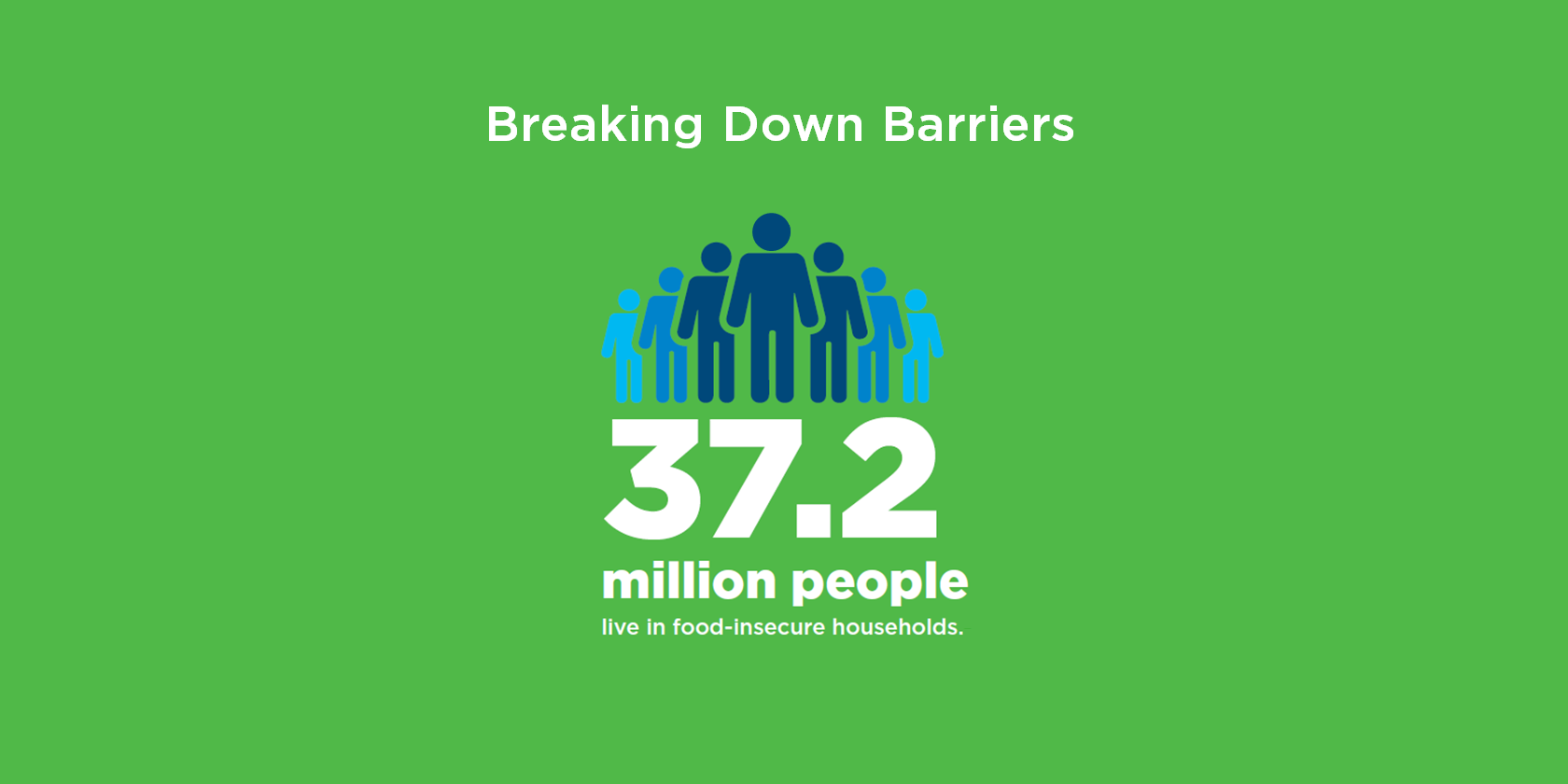
Food Insecurity as a Social Determinant of Health
Access to nutritious food is a critical social determinant of health. According to Healthy People 2030, food insecurity is defined as a household-level economic and social condition of limited or uncertain access to adequate food. Based on research, 12.8 percent (17 million) of U.S. households were food insecure throughout 2022.
Fresh and nutritious foods are essential to good health. But for many, eating a healthy diet is not as simple as choosing to do so. There are often socioeconomic factors beyond their control that limit their access to healthy foods, including income, employment, race/ethnicity, and disability. The risk for food insecurity increases when money to buy food is limited or not available. Neighborhood and living conditions may also affect physical access to food. Patients in low-income neighborhoods or some rural areas may have limited access to full-service supermarkets or grocery stores.
How Does Food Insecurity Impact Patients’ Health?
Food insecurity can impact a patient’s well-being with negative health outcomes and health disparities. Lack of access to healthy food can lead to an increased risk for obesity and chronic diseases. It can also impact a patient’s mental health with increased stress and anxiety.
Did you know?
- In 2022, 44.2 million people live in food-insecure households in the U.S.
- A healthy diet costs $1.48 more per day than an unhealthy one.
- Produce costs 102% more in convenience stores than chain supermarkets and may be the only local grocer.
- Access to large supermarkets increases fruit and vegetable intake by 0.69 servings per day.
- Children refuse unfamiliar food 8-15 times, leading families to purchase nutrient-poor food to avoid waste.

How Can You Help as a Physician?
1. Openly communicate with patients
A patient may not be choosing not to eat nutritiously. Be empathetic and talk to your patient about why a behavior may be happening. Read some critical thinking questions that may be helpful to understand how to combat the behavior.
2. Educate patients on strategies to cope with food insecurity
Talk to them about what may be an unhealthy coping strategy when facing food insecurity and provide alternative solutions to those behaviors. Get tips and information.
3. Guide to food assistance programs and resources
Remind patients to call 211 to get connected with human service agencies and community organizations, such as food banks that can provide assistance or introduce them to resources such as Meals on Wheels or Findhelp.
4. Organize a food drive at your office
Plan a food drive at your practice to support local food banks and communities. For tips on organizing a successful food drive, check resources like Feeding America.
5. Suggest lower-cost produce options
‘Ugly’ produce companies sell and deliver lower-cost produce that looks imperfect but is otherwise in perfect condition. A few marketplaces include Imperfect Foods, Misfits Market, and Hungry Harvest. Find more resources in this article.
Conclusion
By recognizing food insecurity as a social determinant of health, physicians can provide patients with nutrition resources and help improve their access to food and overall well-being. On a societal level, addressing unemployment and social disparity would help reduce food insecurity from the root.
To read more insights on our “Breaking Down Barriers” series, check out the CareAllies resources page.